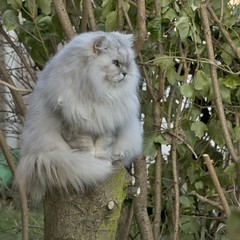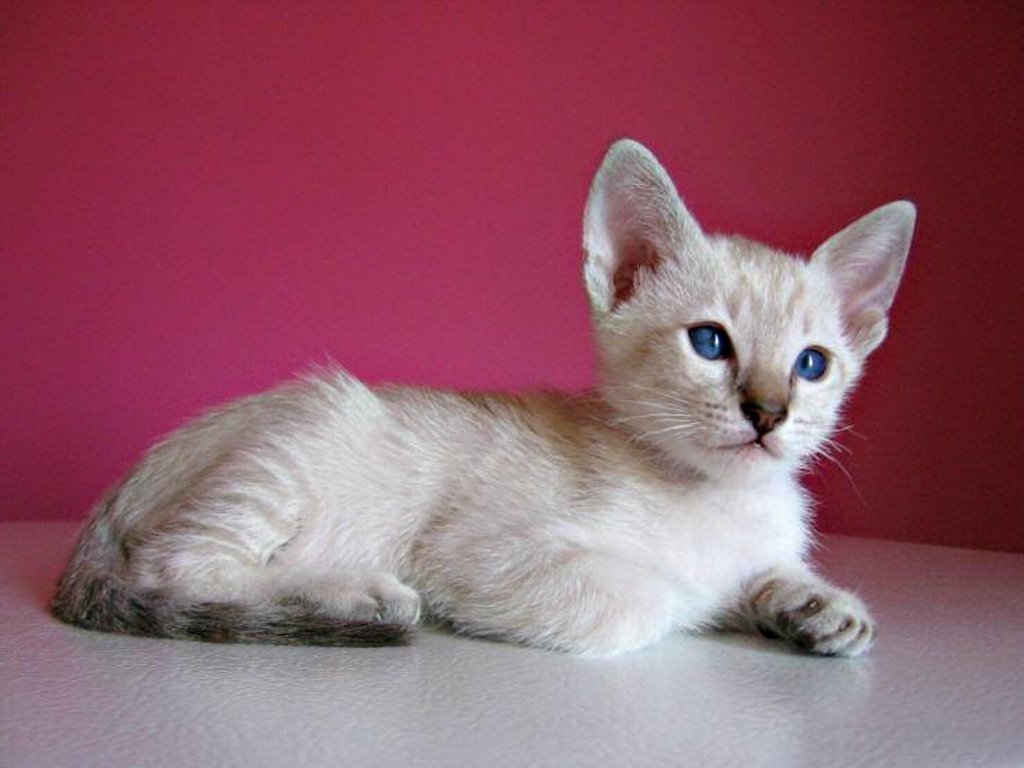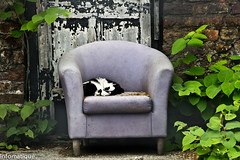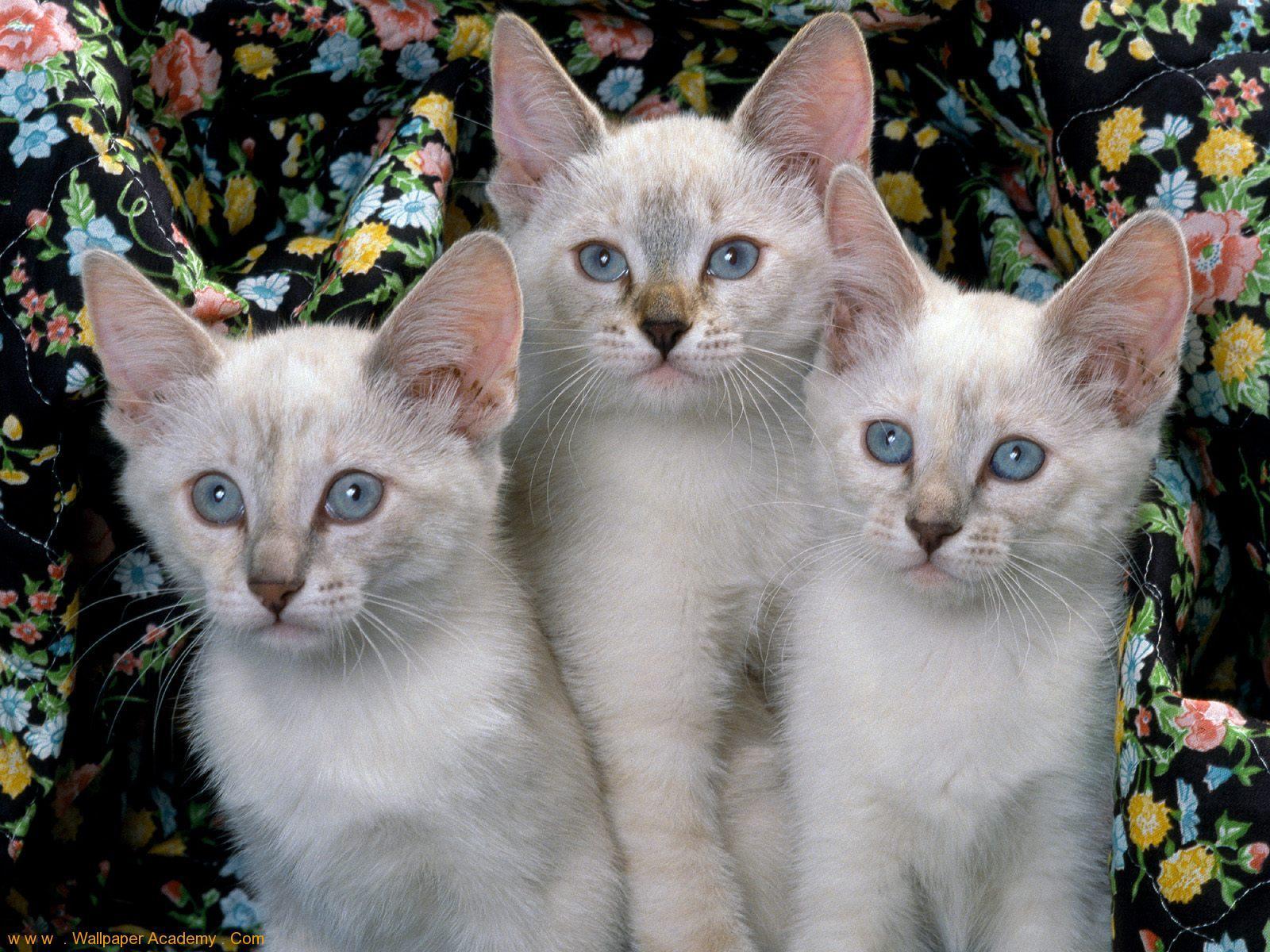Source(google.com.pk)
Siamese Cat Wallpaper Biography
The Siamese (Thai: วิเชียรมาศ, RTGS: Wichianmat) is one of the first distinctly recognized breeds of Oriental cat. The breed originated in Thailand (formerly known as Siam), where they are one of several native breeds and are called Wichian Mat (วิเชียรมาศ, a name meaning "moon diamond" ). In the 20th century the Siamese cat became one of the most popular breeds in Europe and North America.The pointed cat known in the West as "Siamese", recognized for its distinctive markings, is one of several breeds of cats from Siam described and illustrated in manuscripts called "Tamra Maew" (Cat Poems), estimated to have been written from the 14th to the 18th century.[1]
It is often said that the breed was first seen outside their Asian home in 1884, when the British Consul-General in Bangkok, Edward Blencowe Gould (1847–1916),[2] brought a breeding pair of the cats, Pho and Mia, back to Britain as a gift for his sister, Lilian Jane Veley (who went on to co-found the Siamese Cat Club in 1901). However, in 1878, U.S. President Rutherford B. Hayes received "Siam", a gift from the American Consul in Bangkok; this cat was also the first documented Siamese to reach the United States, and predates the Siamese's arrival in the UK by 6 years.[3]
In 1885, Veley's UK cats Pho and Mia produced three Siamese kittens. These kittens – Duen Ngai, Kalohom, and Khromata – and their parents were shown that same year at London's Crystal Palace Show, where their unique appearance and distinct behavior made a huge impression. Unfortunately, all three of the kittens died soon after the show. The reason for their deaths is not documented.[4]
Wankee, born 1895 in Hong Kong, became the first U.K. Siamese champion in 1898.
By 1886, another pair (with kittens) was imported to the UK by a Mrs. Vyvyan and her sister. Compared to the British Shorthair and Persian cats that were familiar to most Britons, these Siamese imports were longer and less "cobby" in body types, had heads that were less rounded with wedge-shaped muzzles and had larger ears. These differences and the pointed coat pattern, which had not been seen before in cats by Westerners, produced a strong impression—one early viewer described them as "an unnatural nightmare of a cat." These striking cats also won some devoted fans and over the next several years, fanciers imported a small number of cats, which together formed the base breeding pool for the entire breed in Britain. It is believed[by whom?]} that most Siamese in Britain today are descended from about eleven of these original imports. In their early days in Britain, they were called the "Royal Cat of Siam," reflecting reports that they had previously been kept only by Siamese royalty.[5] Later research has not shown evidence of any organised royal breeding programme in Siam.[1]
The original Siamese imports were, like their descendants in Thailand today, medium-sized, rather long-bodied, muscular, graceful cats with moderately wedge-shaped heads and ears that were comparatively large but in proportion to the size of the head. The cats ranged from rather substantial to rather slender but were not extreme in either way.
[edit]Modern development
While this show quality specimen from 1960 still exhibits relatively moderate characteristics, the breed standard was setting the stage for the modern Siamese, with its call for a "dainty, long and svelte" body, a long head that "taper[s] in straight lines from the ears to a narrow muzzle", "ears large and pricked, wide at the base" and tail "long and tapering".
In the 1950s - 1960s, as the Siamese was increasing in popularity, many breeders and cat show judges began to favor the more slender look. As a result of generations of selective breeding, they created increasingly long, fine-boned, narrow-headed cats; eventually the modern show Siamese was bred to be extremely elongated, with a lean, tubular body, long, slender legs, a very long, very thin tail that tapers gradually into a point and a long, wedge-shaped head topped by extremely large, wide-set ears. The minority of breeders who stayed with the original style found that their cats were no longer competitive in the show ring.
By the mid-1980s, cats of the original style had disappeared from cat shows, but a few breeders, particularly in the UK, continued to breed and register them, resulting in today's two types of Siamese – the modern "show-style" Siamese, and the "traditional" Siamese, both descended from the same distant ancestors, but with few or no recent ancestors in common. In the late 1980s, breeders and fans of the older style of Siamese organised in order to preserve old, genetically healthy lines from extinction; educate the public about the breed's history; and provide information on where people could buy kittens of the more moderate type. Several different breeders' organisations have developed, with differing breed standards and requirements (such as whether or not cats must have documented proof of ancestry from an internationally recognised registry). Partially due to such disagreements, there are several different names used for the cats, including "Traditional Siamese", "Old Style Siamese", "Classic Siamese", and "Appleheads" (originally a derogatory nickname coined by modern-type Siamese breeders as an exaggerated description of less extremely wedge-shaped heads).[6]
A two-year-old "traditional" Seal Point Siamese cat
The International Cat Association (TICA),[7] in addition to the regular Siamese breed category in which modern show-style Siamese are shown, now accepts a breed for Championship called Thai,[8] similar to the Thaikatze which are seen in Europe. The TICA Thai includes Siamese cats of the less extreme type or a Wichian Mat imported from Thailand. The Thai is also recognized by the World Cat Federatio












Siamese Cat Wallpaper Biography
The Siamese (Thai: วิเชียรมาศ, RTGS: Wichianmat) is one of the first distinctly recognized breeds of Oriental cat. The breed originated in Thailand (formerly known as Siam), where they are one of several native breeds and are called Wichian Mat (วิเชียรมาศ, a name meaning "moon diamond" ). In the 20th century the Siamese cat became one of the most popular breeds in Europe and North America.The pointed cat known in the West as "Siamese", recognized for its distinctive markings, is one of several breeds of cats from Siam described and illustrated in manuscripts called "Tamra Maew" (Cat Poems), estimated to have been written from the 14th to the 18th century.[1]
It is often said that the breed was first seen outside their Asian home in 1884, when the British Consul-General in Bangkok, Edward Blencowe Gould (1847–1916),[2] brought a breeding pair of the cats, Pho and Mia, back to Britain as a gift for his sister, Lilian Jane Veley (who went on to co-found the Siamese Cat Club in 1901). However, in 1878, U.S. President Rutherford B. Hayes received "Siam", a gift from the American Consul in Bangkok; this cat was also the first documented Siamese to reach the United States, and predates the Siamese's arrival in the UK by 6 years.[3]
In 1885, Veley's UK cats Pho and Mia produced three Siamese kittens. These kittens – Duen Ngai, Kalohom, and Khromata – and their parents were shown that same year at London's Crystal Palace Show, where their unique appearance and distinct behavior made a huge impression. Unfortunately, all three of the kittens died soon after the show. The reason for their deaths is not documented.[4]
Wankee, born 1895 in Hong Kong, became the first U.K. Siamese champion in 1898.
By 1886, another pair (with kittens) was imported to the UK by a Mrs. Vyvyan and her sister. Compared to the British Shorthair and Persian cats that were familiar to most Britons, these Siamese imports were longer and less "cobby" in body types, had heads that were less rounded with wedge-shaped muzzles and had larger ears. These differences and the pointed coat pattern, which had not been seen before in cats by Westerners, produced a strong impression—one early viewer described them as "an unnatural nightmare of a cat." These striking cats also won some devoted fans and over the next several years, fanciers imported a small number of cats, which together formed the base breeding pool for the entire breed in Britain. It is believed[by whom?]} that most Siamese in Britain today are descended from about eleven of these original imports. In their early days in Britain, they were called the "Royal Cat of Siam," reflecting reports that they had previously been kept only by Siamese royalty.[5] Later research has not shown evidence of any organised royal breeding programme in Siam.[1]
The original Siamese imports were, like their descendants in Thailand today, medium-sized, rather long-bodied, muscular, graceful cats with moderately wedge-shaped heads and ears that were comparatively large but in proportion to the size of the head. The cats ranged from rather substantial to rather slender but were not extreme in either way.
[edit]Modern development
While this show quality specimen from 1960 still exhibits relatively moderate characteristics, the breed standard was setting the stage for the modern Siamese, with its call for a "dainty, long and svelte" body, a long head that "taper[s] in straight lines from the ears to a narrow muzzle", "ears large and pricked, wide at the base" and tail "long and tapering".
In the 1950s - 1960s, as the Siamese was increasing in popularity, many breeders and cat show judges began to favor the more slender look. As a result of generations of selective breeding, they created increasingly long, fine-boned, narrow-headed cats; eventually the modern show Siamese was bred to be extremely elongated, with a lean, tubular body, long, slender legs, a very long, very thin tail that tapers gradually into a point and a long, wedge-shaped head topped by extremely large, wide-set ears. The minority of breeders who stayed with the original style found that their cats were no longer competitive in the show ring.
By the mid-1980s, cats of the original style had disappeared from cat shows, but a few breeders, particularly in the UK, continued to breed and register them, resulting in today's two types of Siamese – the modern "show-style" Siamese, and the "traditional" Siamese, both descended from the same distant ancestors, but with few or no recent ancestors in common. In the late 1980s, breeders and fans of the older style of Siamese organised in order to preserve old, genetically healthy lines from extinction; educate the public about the breed's history; and provide information on where people could buy kittens of the more moderate type. Several different breeders' organisations have developed, with differing breed standards and requirements (such as whether or not cats must have documented proof of ancestry from an internationally recognised registry). Partially due to such disagreements, there are several different names used for the cats, including "Traditional Siamese", "Old Style Siamese", "Classic Siamese", and "Appleheads" (originally a derogatory nickname coined by modern-type Siamese breeders as an exaggerated description of less extremely wedge-shaped heads).[6]
A two-year-old "traditional" Seal Point Siamese cat
The International Cat Association (TICA),[7] in addition to the regular Siamese breed category in which modern show-style Siamese are shown, now accepts a breed for Championship called Thai,[8] similar to the Thaikatze which are seen in Europe. The TICA Thai includes Siamese cats of the less extreme type or a Wichian Mat imported from Thailand. The Thai is also recognized by the World Cat Federatio
Siamese Cat Wallpaper

Siamese Cat Wallpaper

Siamese Cat Wallpaper

Siamese Cat Wallpaper

Siamese Cat Wallpaper

Siamese Cat Wallpaper

Siamese Cat Wallpaper

Siamese Cat Wallpaper

Siamese Cat Wallpaper

Siamese Cat Wallpaper

Siamese Cat Wallpaper

Siamese Cat Wallpaper

No comments:
Post a Comment